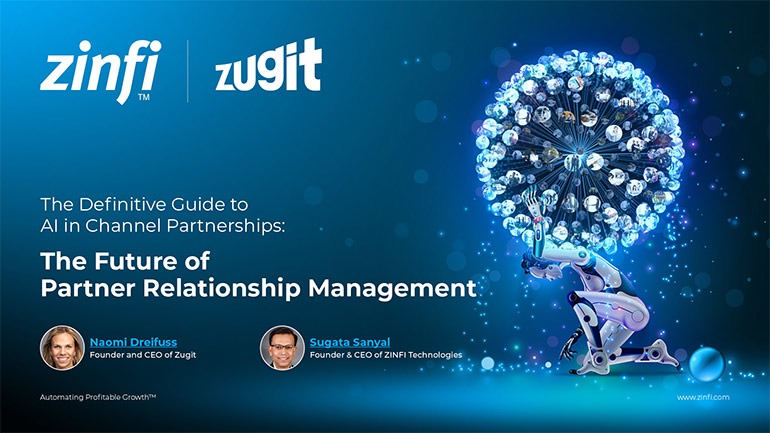Glossary - How to - Partner Sales Strategy
How to Develop a Partner Sales Strategy?
Introduction
A partner sales strategy is a structured plan businesses use to engage, support, and optimize the performance of their channel partners in selling products or services. In today’s highly competitive business landscape, organizations leverage partner networks to expand their reach, increase revenue, and enhance customer experiences. A well-defined partner sales strategy ensures channel partners are aligned with the company’s goals, trained, and motivated to drive sales.
For companies utilizing Partner Relationship Management (PRM) tools, an effective partner sales strategy can help streamline processes, improve collaboration, and enhance the overall efficiency of their partner ecosystem. PRM automation is crucial in tracking partner performance, providing targeted enablement resources, and ensuring seamless communication between vendors and their partners.
Key Takeaways:
Define Clear Partner Goals and Objectives:
A successful partner sales strategy starts with setting clear, measurable goals. Businesses must outline what they aim to achieve through their partners, such as:
- Expanding into new markets
- Increasing product adoption
- Enhancing customer support through local representation
- Growing revenue through indirect sales
Setting SMART (Specific, Measurable, Achievable, Relevant, Time-bound) objectives ensures that vendors and partners have a well-defined path to success.
Identify the Right Partners:
Selecting the right partners is crucial for a successful sales strategy. Businesses should evaluate potential partners based on the following:
- Industry expertise and market reach
- Previous sales performance and customer base
- Commitment to training and development
- Cultural and operational alignment
PRM software helps in partner profiling and segmentation, ensuring that organizations collaborate with the most suitable partners.
Implement a Strong Partner Enablement Program:
Empowering partners with the right tools and knowledge significantly boosts their performance. An effective partner enablement program should include:
- Sales training and product knowledge sessions
- Access to marketing collateral and sales playbooks
- Lead generation and co-marketing opportunities
- Certification programs and incentive structures
Using ZINFI’s PRM solutions, businesses can automate onboarding and training processes, ensuring partners are always up-to-date with the latest resources.
Leverage Data-Driven Insights for Performance Tracking:
Tracking and analyzing partner performance metrics is essential to optimize sales strategies. Key performance indicators (KPIs) to monitor include:
- Sales revenue contribution per partner
- Deal registration success rates
- Lead conversion rates
- Customer satisfaction and feedback
PRM platforms provide real-time dashboards and analytics that help organizations adjust strategies and offer personalized support to underperforming partners.
Foster Strong Partner Relationships with Incentives:
A strong partner sales strategy involves motivating partners through well-structured incentive programs, including:
- Tiered commission structures
- Exclusive bonuses for high-performing partners
- Marketing Development Funds (MDF)
- Sales performance rebates
By rewarding partners for their efforts, companies can build loyalty, improve engagement, and drive higher sales performance.
Summary of Key Takeaways:
To develop a successful partner sales strategy, businesses should:
- Define clear goals and measurable objectives
- Identify and select the right partners
- Implement a robust partner enablement program
- Use data-driven insights for performance tracking
- Foster long-term relationships through incentives
PRM automation enhances these aspects, ensuring businesses and their partners achieve mutual success.
Key Examples:
- Automotive Manufacturing: Automotive companies rely on dealer networks to sell their vehicles. A well-defined partner sales strategy ensures dealerships have the right incentives, training, and support to boost car sales and enhance customer experiences.
- Consumer Electronics: Tech companies use retail partnerships to distribute their latest gadgets. Implementing a robust partner enablement program ensures that store representatives are knowledgeable about product features, leading to higher sales conversions.
- Energy Production: Solar and renewable energy providers work with resellers and installation partners. A structured partner strategy enables them to expand into new regions while ensuring regulatory compliance and brand consistency.
- Financial Services: Banks and insurance companies partner with agents and brokers to reach more customers. Offering customized training and performance incentives ensures financial advisors effectively sell products and services.
- Food and Beverage: Manufacturers distribute their products through wholesalers and retailers. Providing co-marketing funds and promotional support helps drive product visibility and increase sales.
- Healthcare Services: Medical device manufacturers collaborate with distributors to supply hospitals and clinics. Partner training ensures sales teams can effectively communicate product benefits to healthcare professionals.
- Information Technology: Software companies leverage channel partners for cloud services and SaaS solutions. PRM automation ensures seamless deal registration, lead tracking, and ongoing technical training.
- Pharmaceutical Development: Drug manufacturers partner with pharmacies and healthcare providers to distribute medicines. Compliance training and performance monitoring ensure that sales are optimized within legal frameworks.
- Retail Industry: Franchise businesses depend on local operators. A structured sales strategy with revenue-sharing models and marketing support helps retail brands scale efficiently.
- Telecommunications: Telecom providers collaborate with resellers to sell mobile plans and internet services. Incentive programs and partner relationship tools boost sales performance.
Conclusion:
Developing a partner sales strategy is essential for businesses aiming to scale their operations and maximize revenue through indirect sales channels. Organizations should focus on setting clear goals, selecting the right partners, implementing strong enablement programs, leveraging data insights, and incentivizing partners for success.
By incorporating Partner Relationship Management (PRM) automation, businesses can enhance collaboration, streamline workflows, and ensure continuous partner engagement. Whether in IT, healthcare, retail, or manufacturing, a well-executed partner sales strategy drives sustained growth and market expansion.
Associated Keywords:
- Partner Sales Framework
- Channel Sales Strategy
- Partner Revenue Growth















